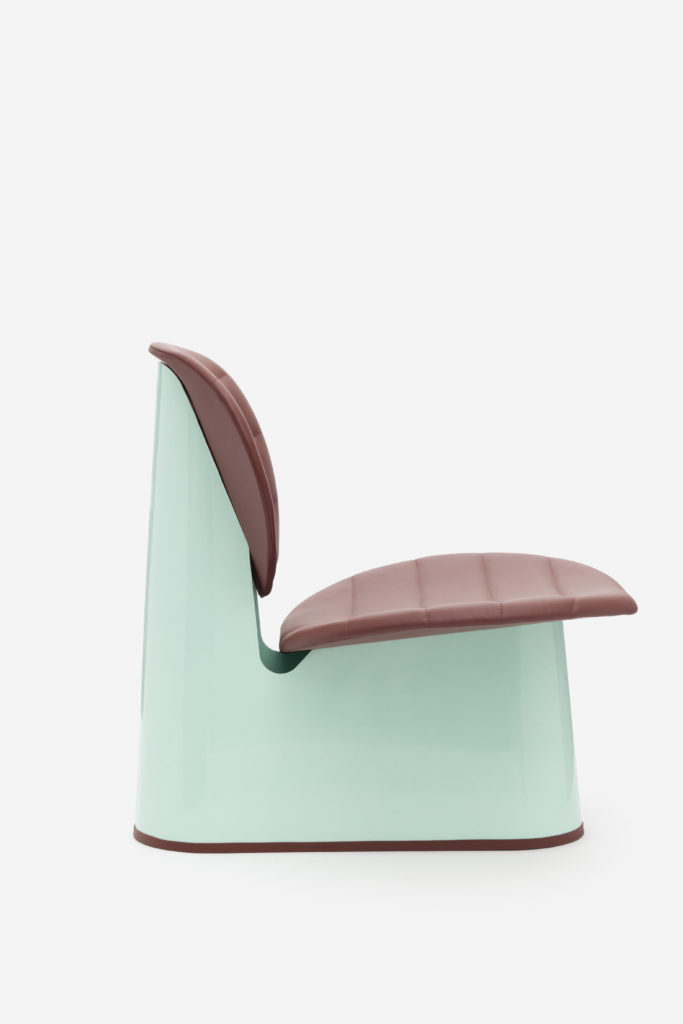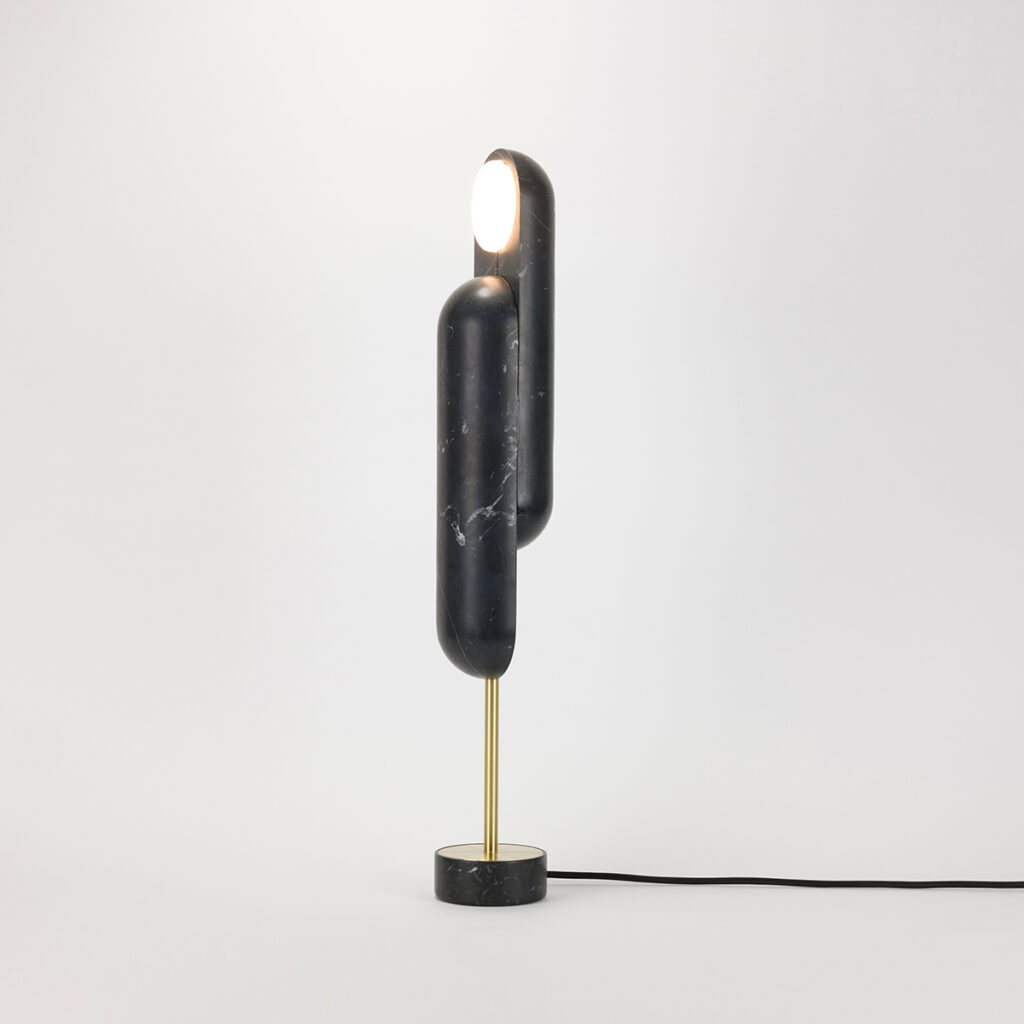

"An Undertaken Eclecticism": A French Collection by François Leblanc Di Cicilia
“I always consider an object as a key to diverse universes. From the dream world of the creator [and] through the experience of the producer, the object starts its own story when it finds its place in a house. This collection of objects is a collection of keys to multiple stories and experiences.”
– François Leblanc Di Cicilia, curator of “An Undertaken Eclecticism”
View the full collection, “An Undertaken Eclecticism”, including the “Plots” Shelving System.
With such a strong and extensive heritage of artistic practice, design, and craftsmanship, one can tend to characterise the contemporary French design scene in terms of that which came before it. There is a lineage of luxurious aesthetics, elegant details, and artisanal qualities that enshrines the scene, perpetuating a certain artistic ideal. From this, however, the focus on craftsmanship, functionality, and aesthetic contextualisation has played a large part in the ways in which emerging designers have situated themselves – how do they respond to these previously held ideals? Where can they add their own innovative solutions? Which aspects and traditions can be twisted and moulded to the present moment? It is from these questions that contemporary makers and designers have carved out their space in and shaped this diverse, ever-evolving, and eclectic scene.
“An Undertaken Eclecticism” highlights the multiplicity of forms, materials, and influences in France’s contemporary collectible design scene and includes work from designers Bigtime Studio, Dan Yeffet, Dimitry Hlinka, Maxime Bellaunay, Samuel Accoceberry, Studio Brichet Ziegler, and Sophie Taillet. From experiments with alternative materials to new approaches applied to familiar forms, each piece in this collection speaks to a sense of diversity and desire to explore the possibilities of the field of design. As described by design consultant and collection curator François LeBlanc Di Cicilia, “the collection we have gathered here shows an unconditional love for materials, sometimes twisting the tradition; shapes and images follow almost at the opposite of a decorative journey to focus on design”. The range of experiences, viewpoints, and desires to experiment with function, technique, and material has allowed these designers and their practices to shape the contemporary scene, further developing the eclectic landscape we see today.
Interview with collection curator François Leblanc Di Cicilia
Which three words would you use to describe the contemporary design scene in France?
This is a difficult question and a good exercise to answer the purpose of this collection at the beginning of an interview and I thank Adorno for granting this space for an alternative view of the French scene, showing the eclecticism of the inspiration nowadays.
SO, jumping on the theme I would say: diversity. Many materials, inspirations, colours, shapes – the new generation of French designers seems to be free from their [peers] and to express a stronger personality in respect of the know-how.
This point leads me to the second word: makers. For a long time, I was really upset by the fact that many designers did know more about processes than about [how] to make. I am very proud to have enlisted a generation of designers that knows handling matters.
The third world would be: narration. I always consider an object as a key to diverse universes. From the dream world of the creator [and] through the experience of the producer, the object starts its own story when it finds its place in a house. This collection of objects is a collection of keys to multiple stories and experiences.




With your background as a design consultant and your eye for identifying emerging talent, which aspects of a designer’s practice draw your attention? Why?
I would never forget the emotional aspect of the first encounter, what the designer is able to bring us in a world that has everything. New functions are almost impossible to find for a new piece of furniture, but, as for the piano, the number of emotions or experiences to play with are almost infinite. So, the ability to generate sensations that are not made only for the show is important.
For collectible creations, I would say the commitment to matter [draws my attention]. How to reveal, to maximise it? With all respect and experience not to waste it.






How have you approached the curation of “An Undertaken Eclecticism”?
Who are the designers who also have a collectible collection of objects was my first question. Among them, who will show in the best way that the French scene is, as its population, so diverse and free from the big names [that] we always drop as a reference for French Heritage. I wanted to show how much the French designers love matter and are connected to the making process, without forgetting what probably qualifies most of the French art de vivre in general, a perfect image.


In your curatorial statement for “An Undertaken Eclecticism”, you reference the heritage of French art and design. In what ways does this collection – and these designers – both speak to and/or against this heritage?
Waouh, this a wide question and I would love to [discuss] that topic with other specialists of design. Like many European countries, we have a long history of creation, all the work to do now is to balance in between a deep respect for it and a research for new behaviours. What would speak for [it] is the commitment to keep alive many processes or know-hows, what would speak against [it] is the freedom of shapes, colours, and artistic approaches of the object.
Respect for tradition is to get back to a good management of resources and a respect for handiwork. A century ago – not so long ago – quality objects were expensive, materials were rare, qualified hand workers [were] very researched, there was no idea to waste as today we seem to re-discover. Marquetry [and] terrazzo are good examples of a creative way to use less or recycle with style! In that sense, this collection shows how the designers today dare to use all materials with respect and [to] a maximum effect.
All influences show a great sense of freedom in this collection. Art is everywhere, as an approach or as references, and that would speak against this French heritage that loves to set up strict limitations for all fields. This collection of French design is free and joyful.




This collection highlights a diverse range of practices: from Bigtime Studio’s investigations of colour and material to Sophia Taillet’s experiments with glass-making to Dan Yeffet’s contemporary twists on traditional forms, among others. Looking forward, which aspects of this eclectic French design scene do you think will continue to develop?
Investigations, experiences, and twist of the tradition: you already noticed what is probably one of the main trends for the scene. Generally speaking, as most of the objects will be dematerialized or to be rented for short term, the collection of items we will keep, will have to be very strong. Functional, [I’m] not so sure. The occidental trend shows the research for items that are pieces of art: well done, expressive, reflective. A long lasting pleasure, better quality, smaller quantities, traceability, and transgressive respect [will] probably define collectible design for a while.










“An Undertaken Eclecticism” is available on Adorno from 16 July 2020. View the exclusive interview with curator François LeBlanc Di Cicilia and Design Journalist Dominic Lutyens streamed live on Adorno’s Instagram, @adorno.design.






